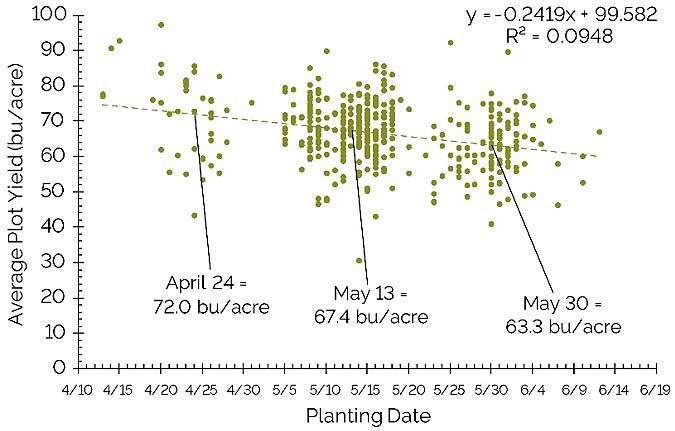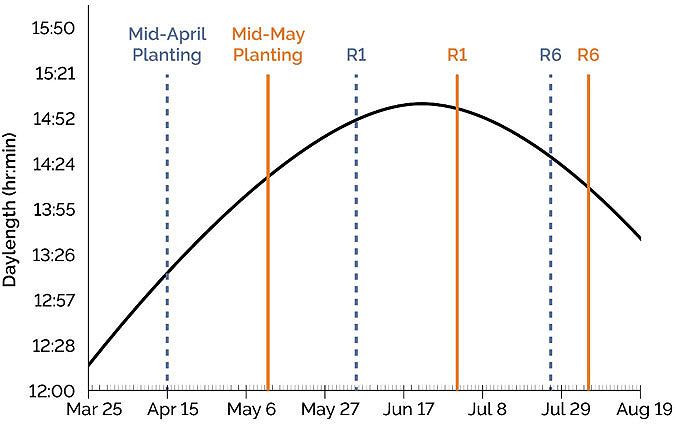Yield Potential
Delayed Planting
- Historical planting date research in soybeans has often focused on the negative yield impacts of late planting.
- The potential for significant yield reduction associated with late planting has been well-documented – with a rapid decline in yield potential beginning around May 30th in the Midwest, at a rate of about 0.7% per day (Figure 1, Egli and Cornelius, 2009).

Figure 1. Relative yield by planting date in the Midwest (Egli and Cornelius, 2009).
Early Planting for Higher Yield
- A series of more recent data suggests the potential to increase soybean yield with earlier planting, in contrast to prior work which often showed little benefit to late-April or early May planting compared to mid- to late-May planting.
- Survey data from the Pioneer High Yield Soybean Challenge research effort in Nebraska and Kansas found a 0.41 bu/acre/day linear decrease in soybean yield beginning at the earliest observed planting dates in late April (Figure 2, Propheter & Jeschke, 2017).
- A similar trend was observed with Pioneer on-farm soybean plots in Iowa in 2017, with a decline of 0.24 bu/acre/day from the earliest observed planting dates.
- In both of these examples, there are certainly other factors influencing yield at each single location, as indicated by the clusters of data points; however, this yield by planting date trend appears to be real and repeatable.
- Similar trends have been observed in recent planting date research. A 3-year University of Illinois study showed significant yield benefit with earlier planting in Northern and Central Illinois (Table 1).

Figure 2. Soybean yield by planting date from High Yield Soybean Challenge entries in Nebraska and Kansas from 2013-2016 (Propheter and Jeschke, 2017).

Figure 3. Average plot location yield by planting date from 455 on-farm soybean research locations in Iowa, Illinois, and Indiana in 2017.
Table 1. Average soybean yield with early and normal planting dates in Northern and Central Illinois trials conducted from 2012 to 2014 (Nafziger and Vossenkemper, 2015).

- Recent research exploring the effects of different management factors on soybean yield have often placed planting date near the top of the list.
- A Pioneer sampling effort conducted across 18 states in 2017 to identify important soil and tissue nutrient levels associated with soybean yields found that planting date had the highest correlation with yield of all the nutrient, management, and weather factors investigated.
- Similarly, a University-led research project across 10 states in the North Central US from 2014 to 2015 also found planting date to have the most consistent impact on soybean yield (Edreira et al., 2017). Yield penalties for later planting ranged from 0 to -0.5 bu/acre/day, with the variation in yield response related to the amount of water deficit stress during the later stages of pod setting (R3-R5). Locations that experienced water stress generally had less of a yield response to earlier planting.




